Fixing America’s Broken Approach to Young Black Men
The first two steps toward uplifting young black men are simple: Stop killing them and stop locking them in prison for nonviolent offenses. Subsequent steps are harder.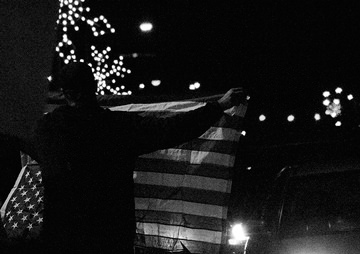 A protester holds up an American flag at a Ferguson demonstration in Memphis, Tenn. (Chris Wieland / CC BY-NC-ND 2.0)
A protester holds up an American flag at a Ferguson demonstration in Memphis, Tenn. (Chris Wieland / CC BY-NC-ND 2.0)
The first two steps toward uplifting young black men are simple: Stop killing them and stop locking them in prison for nonviolent offenses.
Subsequent steps are harder, but no real progress can be made until the basics of life and liberty are dealt with. If anything positive is to come of Freddie Gray’s death and the Baltimore rioting that ensued, let it be a new and clear-eyed focus on these fundamental issues of daily life for millions of Americans.
Central to the crisis is “zero-tolerance” or “broken windows” policing, which basically involves cracking down on minor offenses in the hope of reducing major crime as well. Whether this strategy works is the subject of two arguments whose right answers can only be inferred, not proved.
The first involves the contention that police should be more aggressive in patrolling inner-city minority communities because that’s where the criminals are. Those who hold this view might point to Gray’s history of drug arrests. They might argue that the police officers were justified in thinking Gray must have been guilty of something, especially when he ran — and that if he had nothing to hide, he should have simply stayed put.
But this overlooks a universal phenomenon: We find things where we look for them.
If police concentrate their patrols in a certain area and assume every young man they see is a potential or probable criminal, they will conduct more searches — and make more arrests. Which means a high percentage of young men in that neighborhood will have police records. Which, in turn, provides a statistical justification for continued hyper-aggressive police tactics.
In New York, where a federal judge ruled then-mayor Michael Bloomberg’s “stop and frisk” policy unconstitutional, an analysis by the New York Civil Liberties Union found that 85 percent of “stops” in 2012 involved African-Americans or Hispanics — who make up just half the population. The No. 1 goal of the practice, city officials said, was to get illegal weapons off the streets. But minorities were found to be carrying weapons just 2 percent of the time, while 4 percent of whites who were stopped and frisked had weapons.
This doesn’t mean the NYPD should have deployed all its resources to the Upper East Side. What it strongly suggests is that officers, when deciding whether to stop and frisk whites, exercised greater discretion. It suggests police were more likely to single out whites who genuinely had something to hide, while they were more likely to detain African-Americans and Hispanics indiscriminately.
The second argument about aggressive policing is about impact: The advent of “broken windows” has coincided with a dramatic decline in violent crime across the nation.
Did one lead to the other? It is easy to show a correlation but impossible to prove causality. It is not as if police departments were ignoring inner-city communities before the practice of rousting suspects on drug corners was known by a fancy buzzword. And violent crime has also fallen sharply in many communities that either abandoned zero-tolerance policing or never adopted it.
Has crime fallen because so many hard-core criminals are in prison? Believe me, my heart does not bleed for any murderer, armed robber or rapist who is behind bars. But thousands of black men are in prison for possessing or selling marijuana, a drug that is now legal in the nation’s capital. Blacks and whites smoke pot at equal rates, but African-Americans are four times more likely to be arrested for doing so.
In the larger war on drugs, the victims have been black and brown. The American Civil Liberties Union reported last year that African-Americans facing drug charges are imprisoned at a rate 10 times that of whites — and that sentences for black men average nearly 20 percent longer than those for white men. Punishment for possessing or selling crack cocaine remains vastly greater than for an identical quantity of the upscale powder variety.
Back to Freddie Gray and Baltimore: At 25, without education, employment or immediate prospects, he was hardly what anyone would call a pillar of the community. But neither was he any sort of menace to society. Perhaps some intervention would have gotten his life on track, perhaps not. We’ll never know.
When he saw police, he ran. Was that illogical? The officers chased him down, pinned him in a folded position “like origami,” according to a witness, and tossed him into a police wagon. Was that necessary?
The answer to both questions is no. Therein lies the problem.
Eugene Robinson’s email address is [email protected].
© 2015, Washington Post Writers Group
Your support matters…Independent journalism is under threat and overshadowed by heavily funded mainstream media.
You can help level the playing field. Become a member.
Your tax-deductible contribution keeps us digging beneath the headlines to give you thought-provoking, investigative reporting and analysis that unearths what's really happening- without compromise.
Give today to support our courageous, independent journalists.

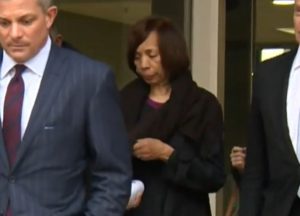
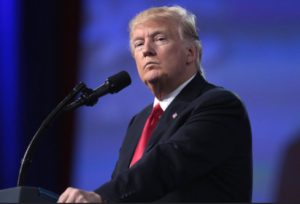
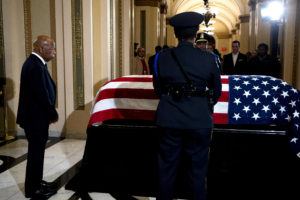
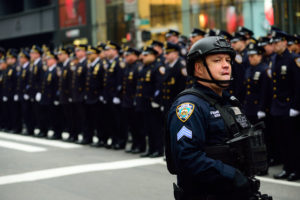
You need to be a supporter to comment.
There are currently no responses to this article.
Be the first to respond.